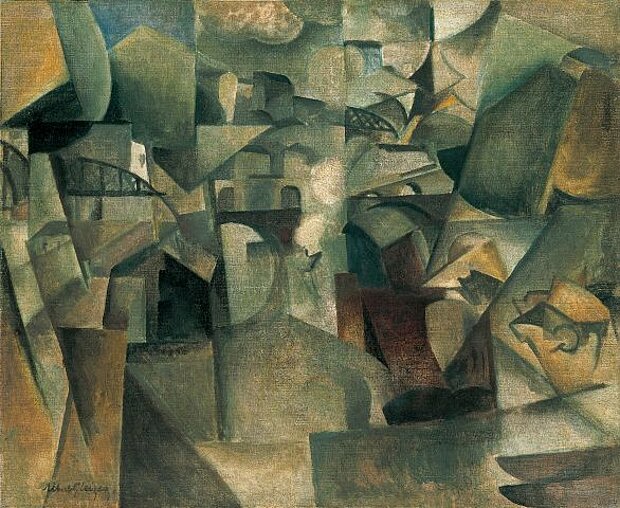
Gleizes, Albert
Les Ponts de Paris (Passy)
The Bridges of Paris (Passy)
1912

© mumok
| Object description | Oil on canvas |
|---|---|
| Object category | painting |
| Material | |
| Technique |
object:
oil paintings
|
| Dimensions |
object size:
height: 60,5 cm,
width: 73,2 cm,
depth: 2,7 cm
frame dimension:
height: 83 cm,
width: 96,5 cm,
depth: 7 cm
object:
weight: 7 kg
|
| Year of acquisition | 1962 |
| Inventory number | B 65/0 |
| Creditline | mumok - Museum moderner Kunst Stiftung Ludwig Wien |
| Rights reference | Gemeinfrei | public domain |
| Further information about the person | Gleizes, Albert [GND] | Gleizes, Albert [ULAN] |
| Literature |
KUBISMUS-KONSTRUKTIVISMUS-FORMKUNST.KLIMT KUPKA PICASSO und andere Il Cubismo. Rivoluzione e tradizione Genau und anders :Mathematik in der Kunst von Dürer bis Sol LeWitt Albert Gleizes, O Cubismo em Majestade The great American Thing. Modern art and national identity Laboratorium Moderne/Bildende Kunst, Fotografie und Film im Aufbruch |
The picture with the title “The Bridges of Paris” by French artist Albert Gleizes was finished in 1912. In its selection of colours, the multi-perspective point of view, and the rhythmic composition of its elements, the picture fulfils the central requirements of so-called analytical Cubism. This style was developed around 1907 by Pablo Picasso and Georges Braque in Paris and today it is regarded as the pioneer of artistic abstraction. The term Cubism—derived from the Latin word ‘cubus’—refers to the geometric reduction that dominates cubist ways of depicting things. In 1910, painter and author Albert Gleizes, who had been received training as a technical draughtman, joined the group of cubists around Robert Delaunay. Together with Jean Metzinger, Albert Gleizes wrote the text “Du Cubisme” in 1912. The text was illustrated with the picture “The Bridges of Paris”. In it the authors are concerned with the theoretical foundations of Cubism. Albert Gleizes was a central figure for the reception of the style, especially abroad.
© mumok – museum moderner kunst stiftung ludwig wien